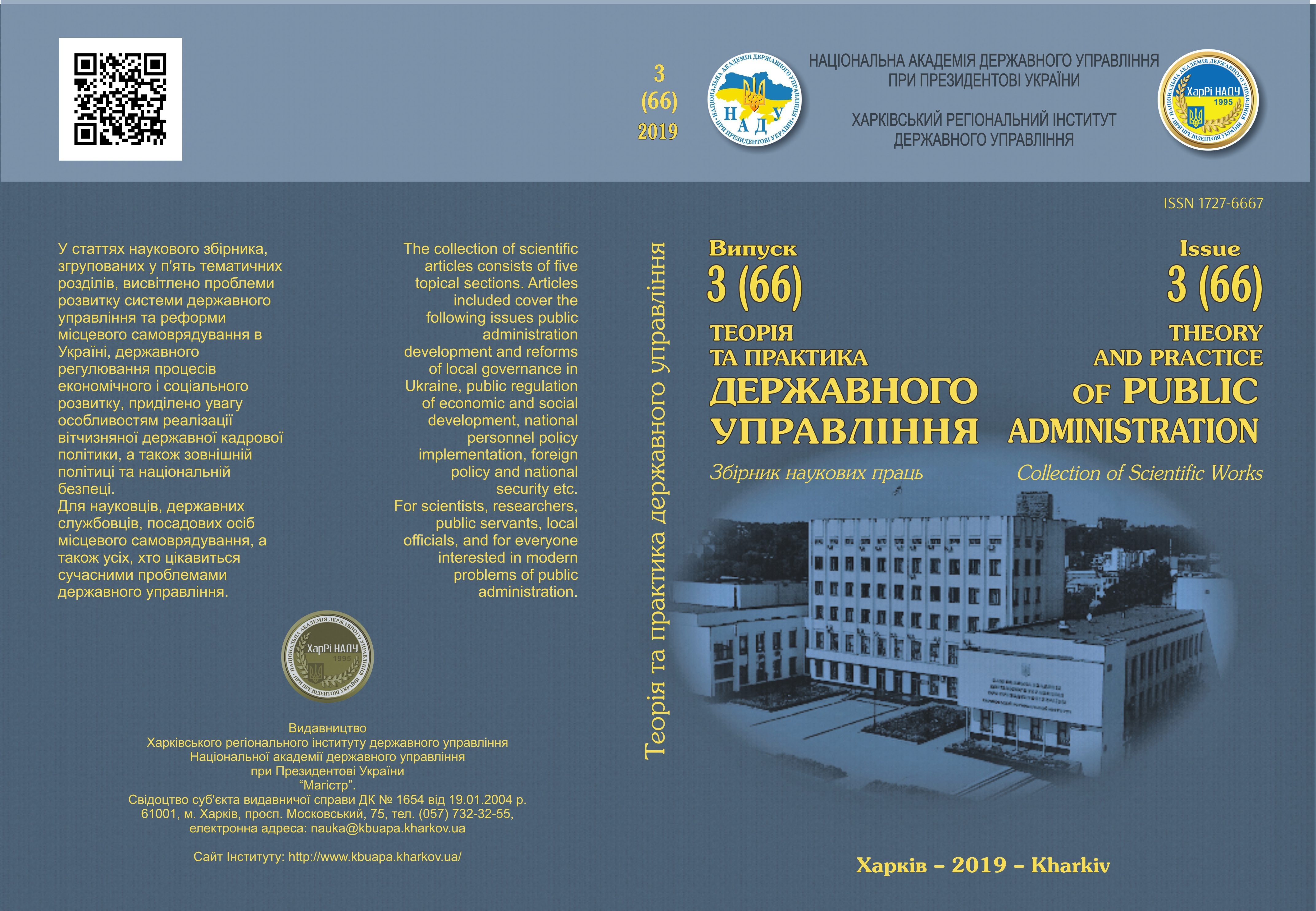DEMOCRATIC MODEL OF COMMUNICATION IN THE SYSTEM OF PUBLIC ADMINISTRATION OF UKRAINE: ESSENCE AND MAIN ELEMENTS
Abstract
This article democratic model of communication in the system of public administration of Ukraine, its essence, and also its basic elements are analyzed.
The author studied the theoretical and practical aspects of the relevance of the creation of a democratic model of communication as an part of the government system. The humanization of communication between citizens and the state on the basis of human-centricity requires the creation of a theoretical model. Such a communication process should be considered at an abstract level and then embody the practical implementation of the idea of strengthening democracy in Ukraine, in particular by democratizing communication between citizens and the state. For this purpose it is necessary to create such a model that will take maximum account of all circumstances of communication of citizens with the state.
In the paper it is noted that communication models were created by scientists of different specialties. These are sociologists, psychologists, linguists, mathematicians, political scientists, government officials, communications professionals, etc. It is especially noted that models of mass communication were most often created. The most famous are the communication models of such authors: Lasswell H. D., Shannon C.E. and Weaver W., Westley and MacLean’s, Braddock R., De Fleur, Dance F., Schramm W., Barnnlund D.C. Maletzke G. Carey James W.
The article describes the democratic model of communication between citizens and state government or local government in Ukraine. The model has the form of an infinity symbol. The author focuses on internal and external factors influencing the communication process.The article describes perspective directions of research of modeling of communication between citizens and state bodies and local self-government. This is a (creating other communication models) search for other communication models between citizens and state government or local government in Ukraine and more.
Downloads
References
Lasswell, H.D. The structure and function of communication in society. URL: https://pracownik.kul.pl/files/37108/public/Lasswell.pdf.
Arora Satish K., Lasswell Harold D. (1969). Political Communication: The Public Language of Political Elites in India and the United States. New York: Holt, Rinehart and Winston.
Shannon, C.E, Weaver, W. (1964). The mathematical theory of communication. Illinois: University of Illinois Press.
Westley and MacLeans Model of Communication. URL: https://www.communicationtheory.org/westley-and-macleans-model-of-communication/.
Braddock, R. An Extension of the “Lasswell Formula”. URL: https://onlinelibrary.wiley.com/doi/abs/10.1111/j.1460-2466.1958.tb01138.x.
De Fleur Model of Communication. URL: https://www.communicationtheory.org/de-fleur-model-of-communication/.
Schramm, W., Roberts, D.F. (1971). The process and effects of mass communication. Illinois: University of Illinois Press.
Barnnlund, D.C. (1988). Communication: the context of change. C.E. Larson, F.E. Dance (Eds.).
Perspectives on communication: colloquium proceedings, 24–40. Milwaukee: Speech Communication Center.
Barnlund, D.C. (1970). A transactional model of communication. K.K. Sereno,
C.D. Mortensen (Eds.). Foundations of communication theory, 83–102. New York: Harper & Row.
Maletzke, G. (1963). Psychologie der Massen kommunikation – Theorie und Systematik. [Psychology of mass communication – theory and systematics]. Hamburg: Hans Bredow Institut.
Carey James W. Communication as Culture: Essays on Media and Society. URL: http://faculty.georgetown.edu/irvinem/theory/Carey-ACulturalAproachtoCommunication.pdf.
Radchenko, O.V., Bukhtatyi, O.Ye. (2014). Modeliuvannia derzhavnoi komunikatyvnoi polityky v umovakh suchasnoi Ukrainy [Modeling of state communication policy in the conditions of modern Ukraine]. Publichne upravlinnia: teoriia ta praktyka: zb. nauk. pr. [Public administration: theory and practice], 3 (19), 80–91. Kiev [in Ukrainian].
Authors who publish with this journal agree to the following terms:
- Authors retain copyright and grant the journal right of first publication with the work simultaneously licensed under a Creative Commons Attribution License that allows others to share the work with an acknowledgement of the work's authorship and initial publication in this journal.
- Authors are able to enter into separate, additional contractual arrangements for the non-exclusive distribution of the journal's published version of the work (e.g., post it to an institutional repository or publish it in a book), with an acknowledgement of its initial publication in this journal.
- Authors are permitted and encouraged to post their work online (e.g., in institutional repositories or on their website) prior to and during the submission process, as it can lead to productive exchanges, as well as earlier and greater citation of published work (See The Effect of Open Access).

